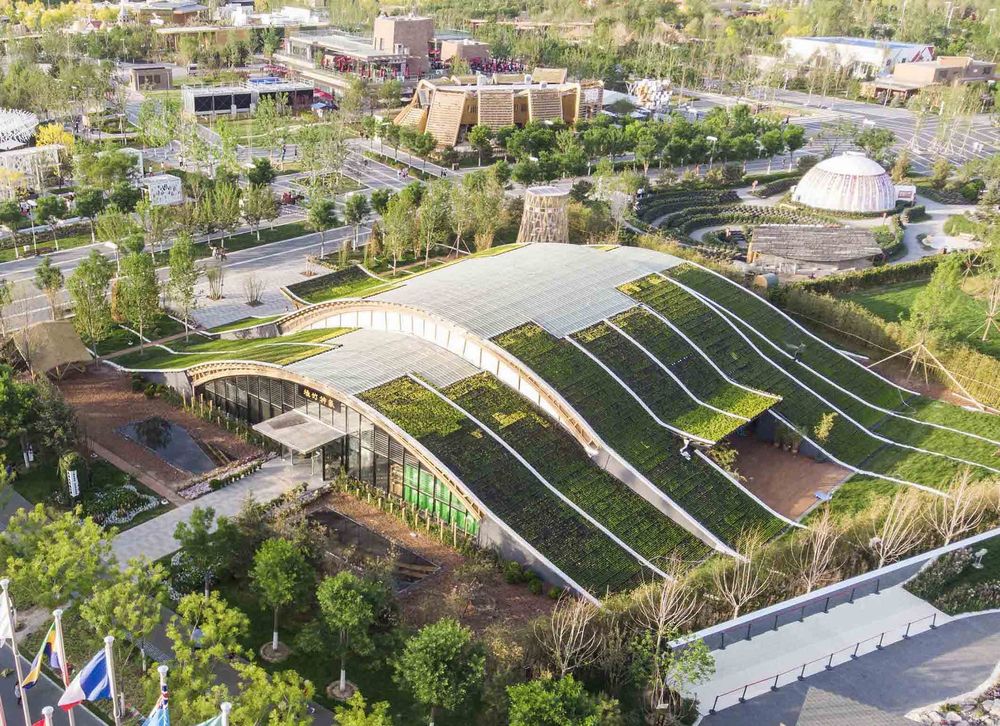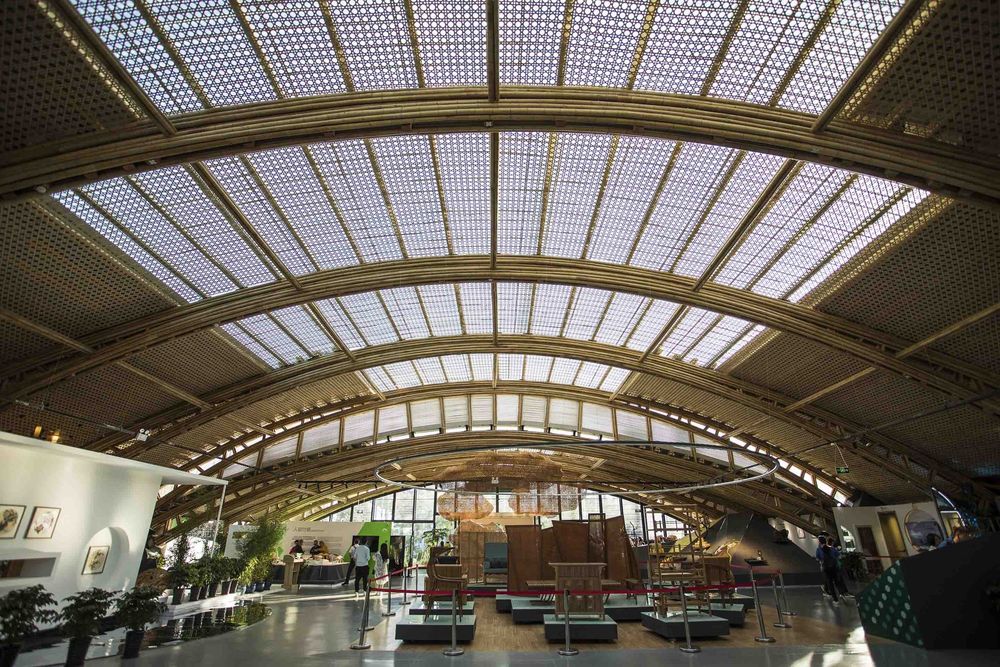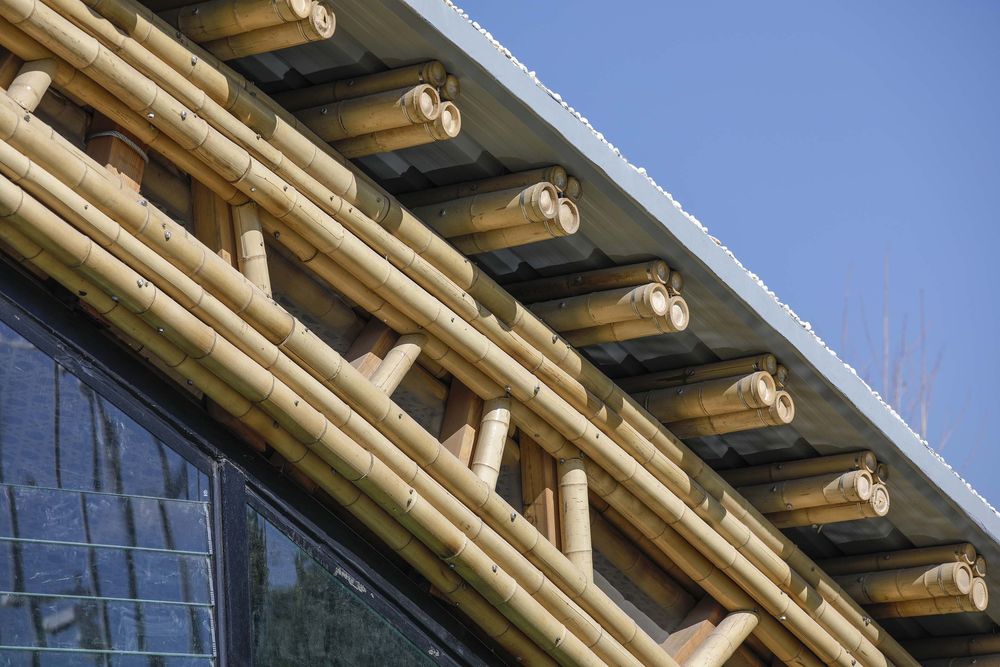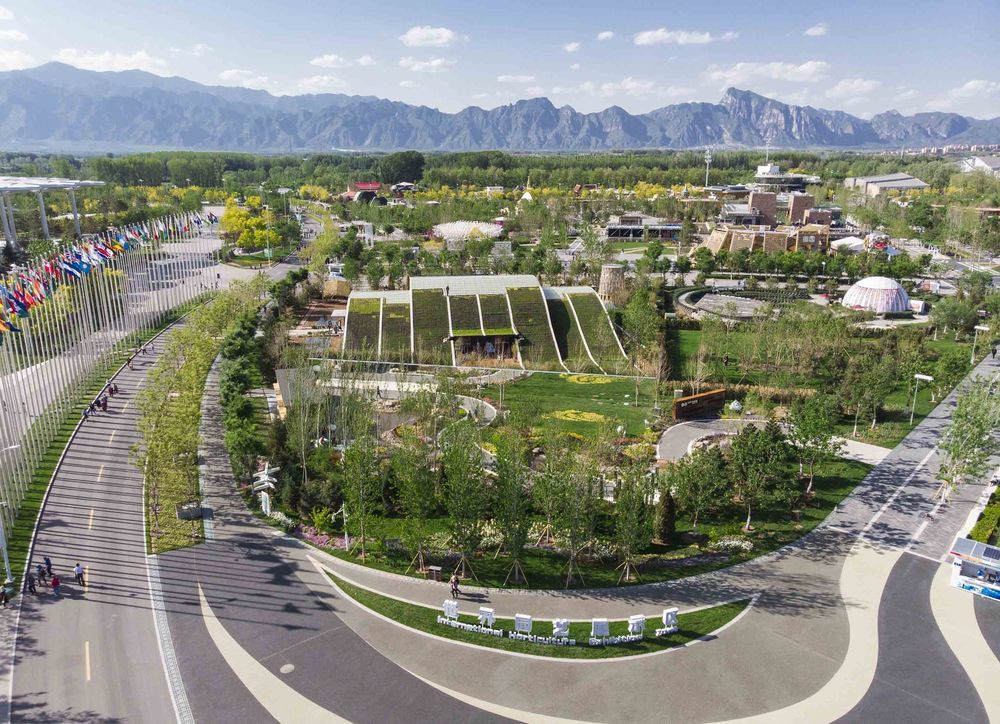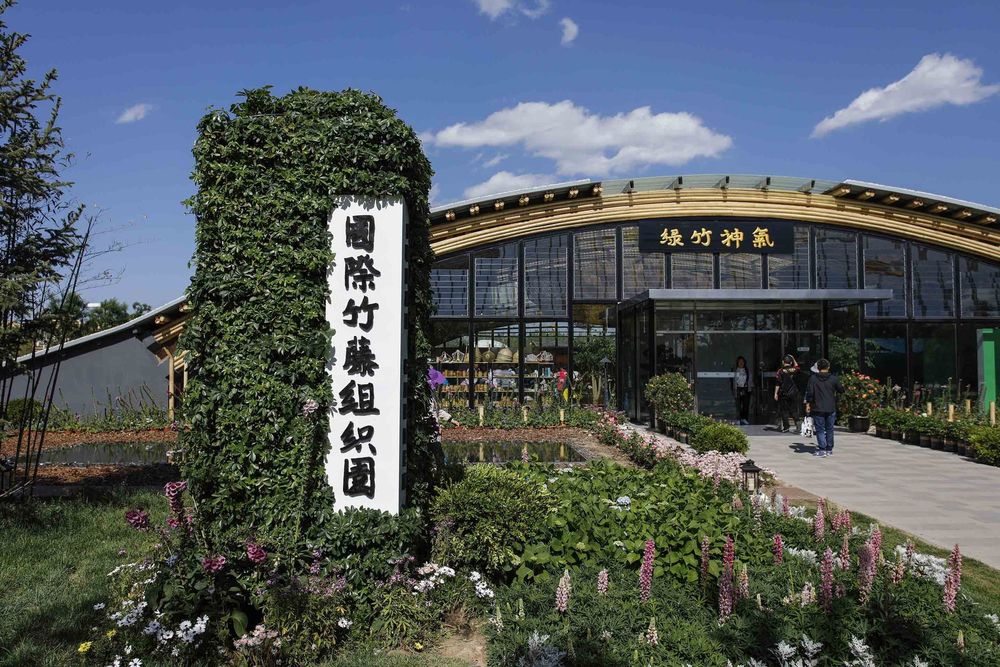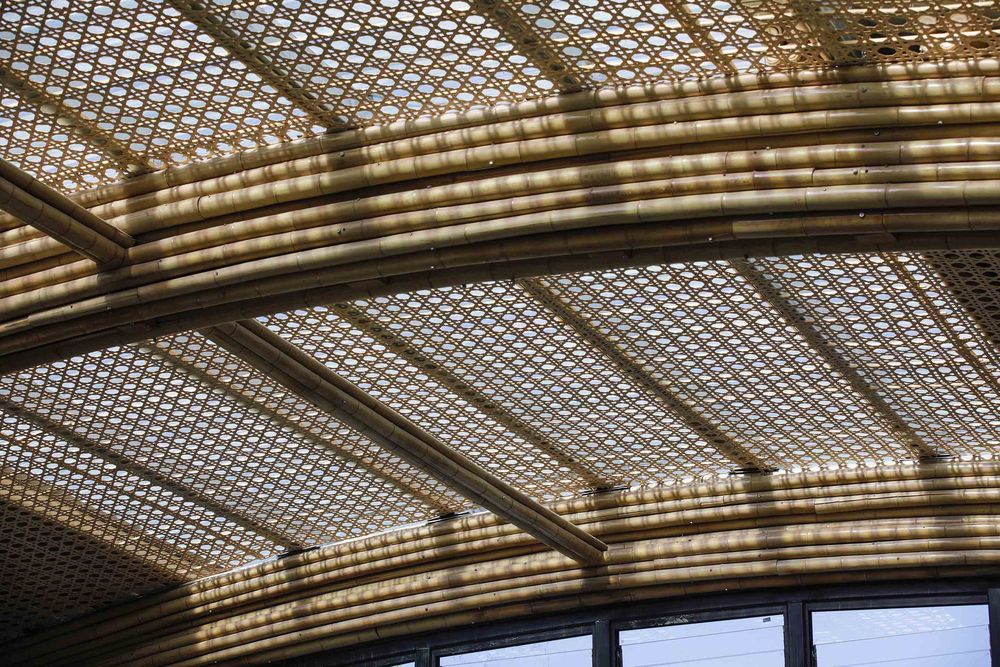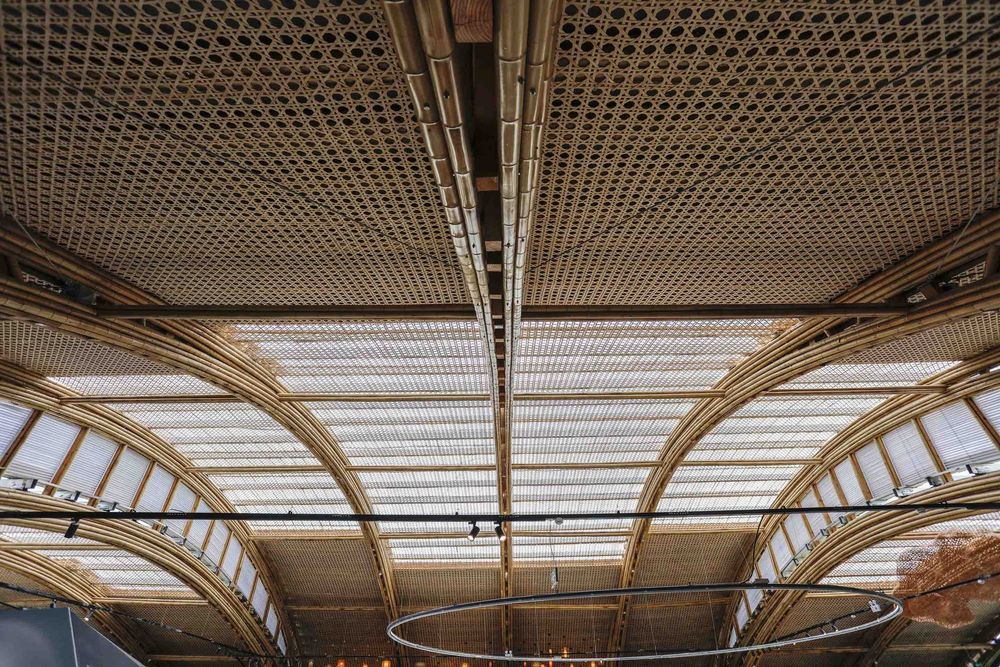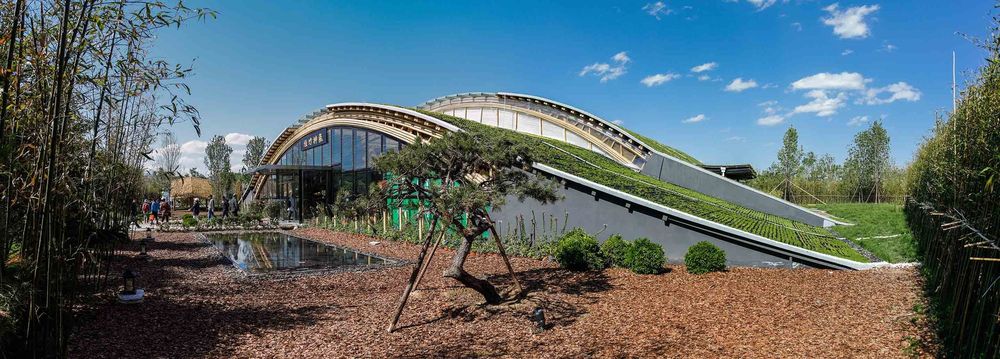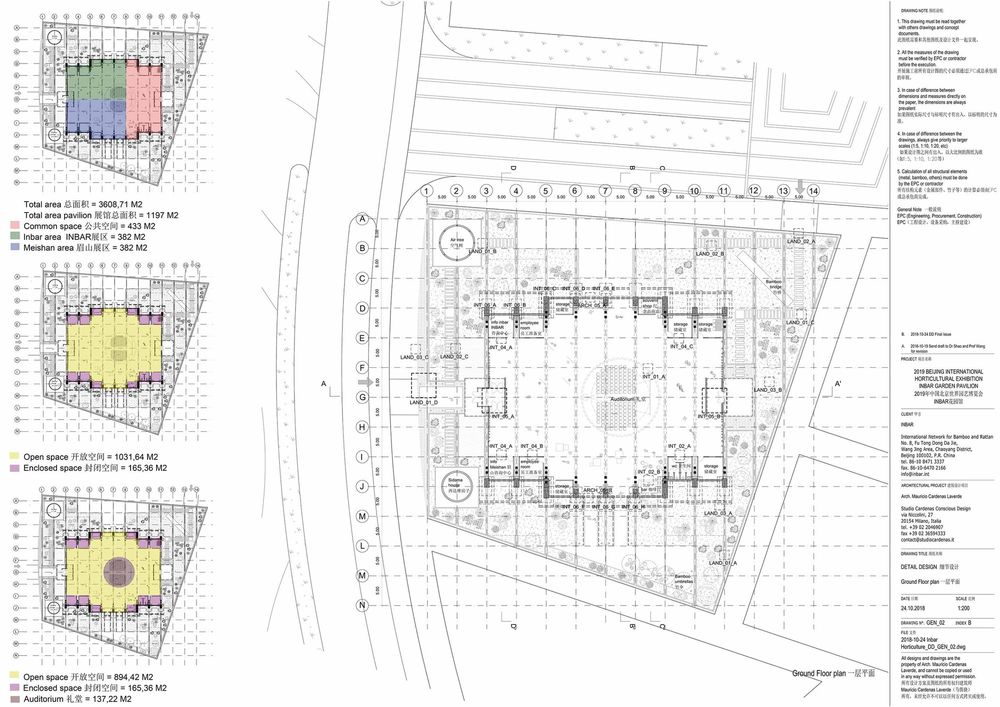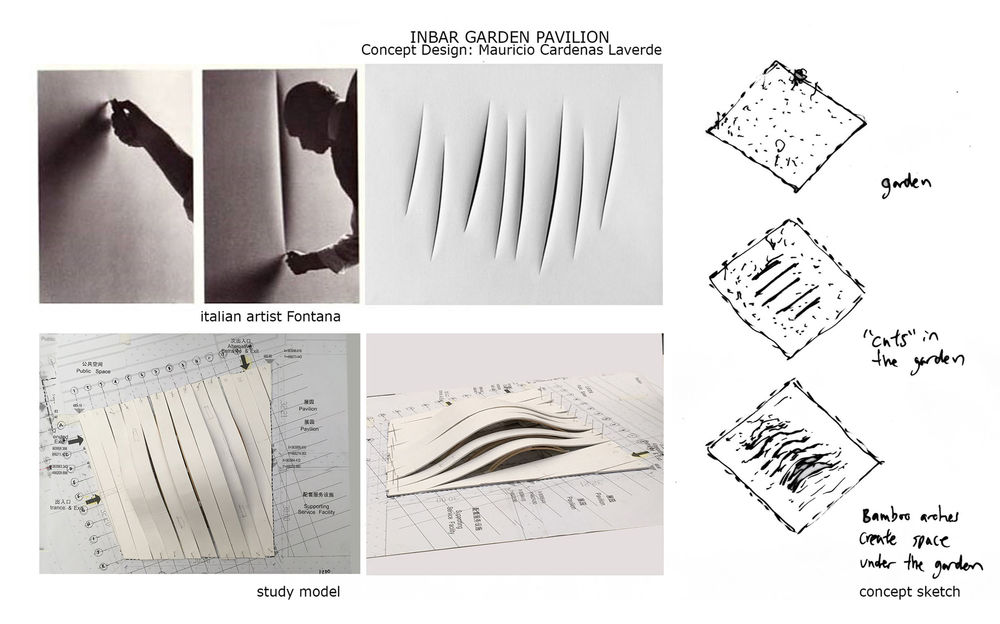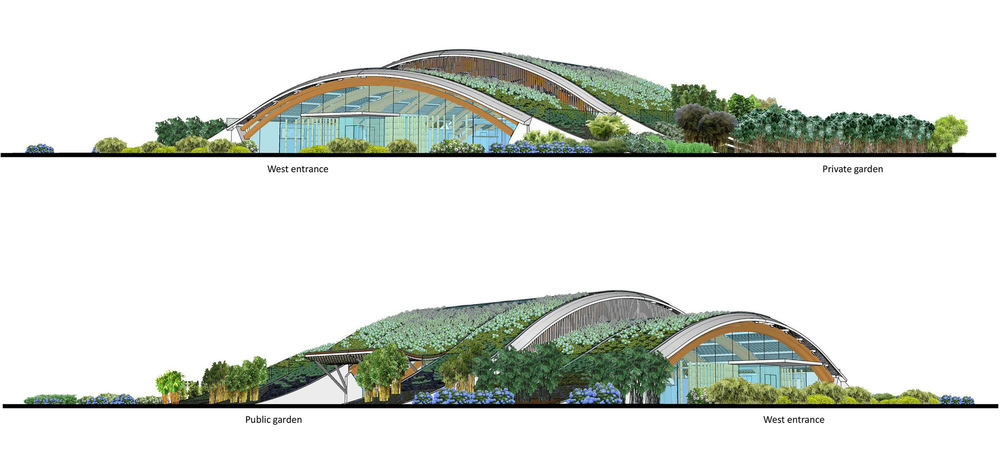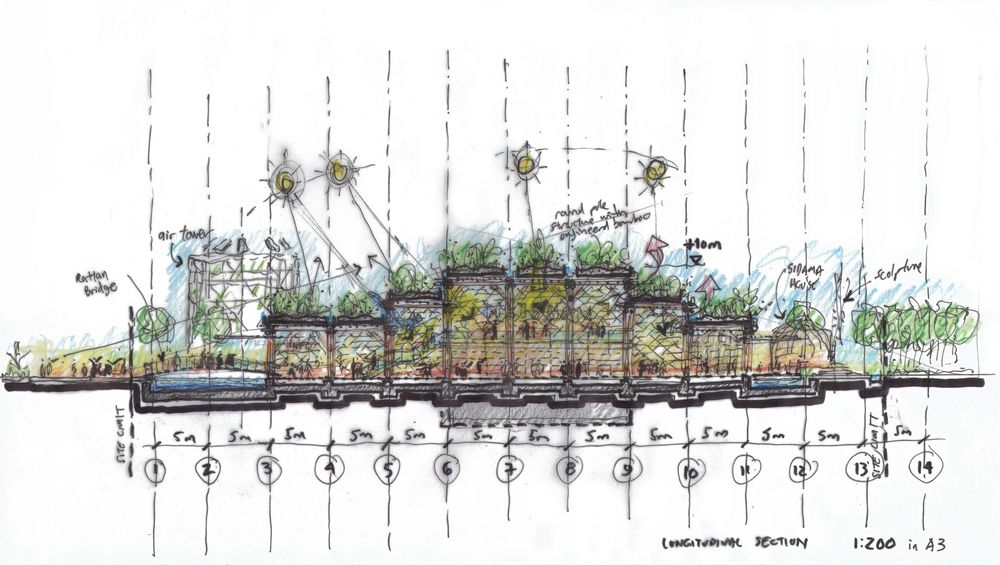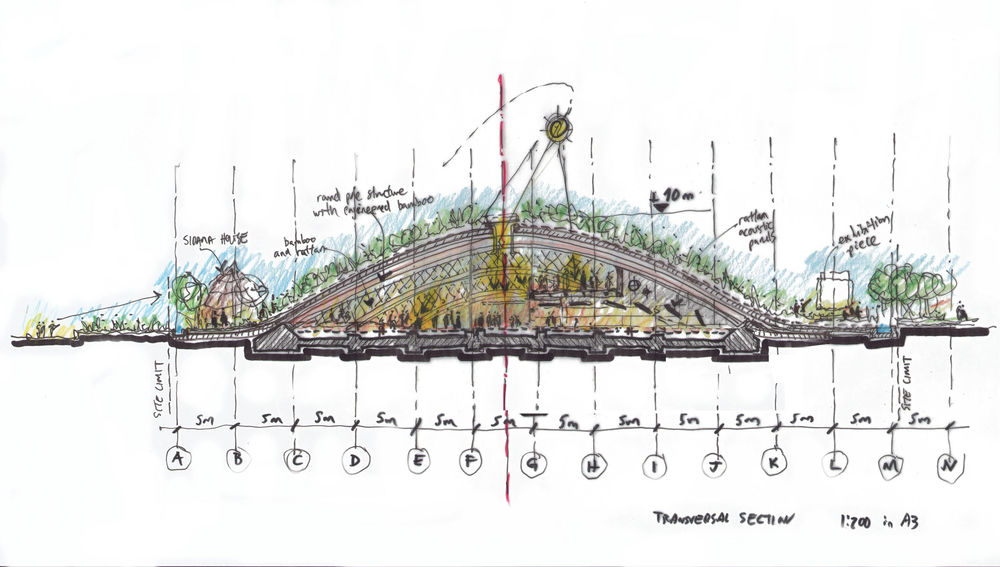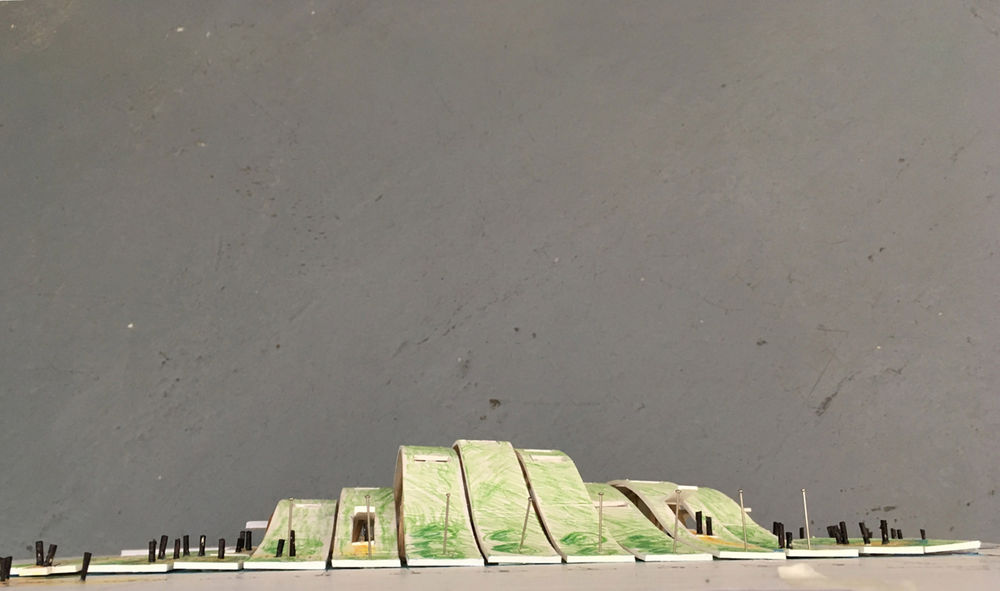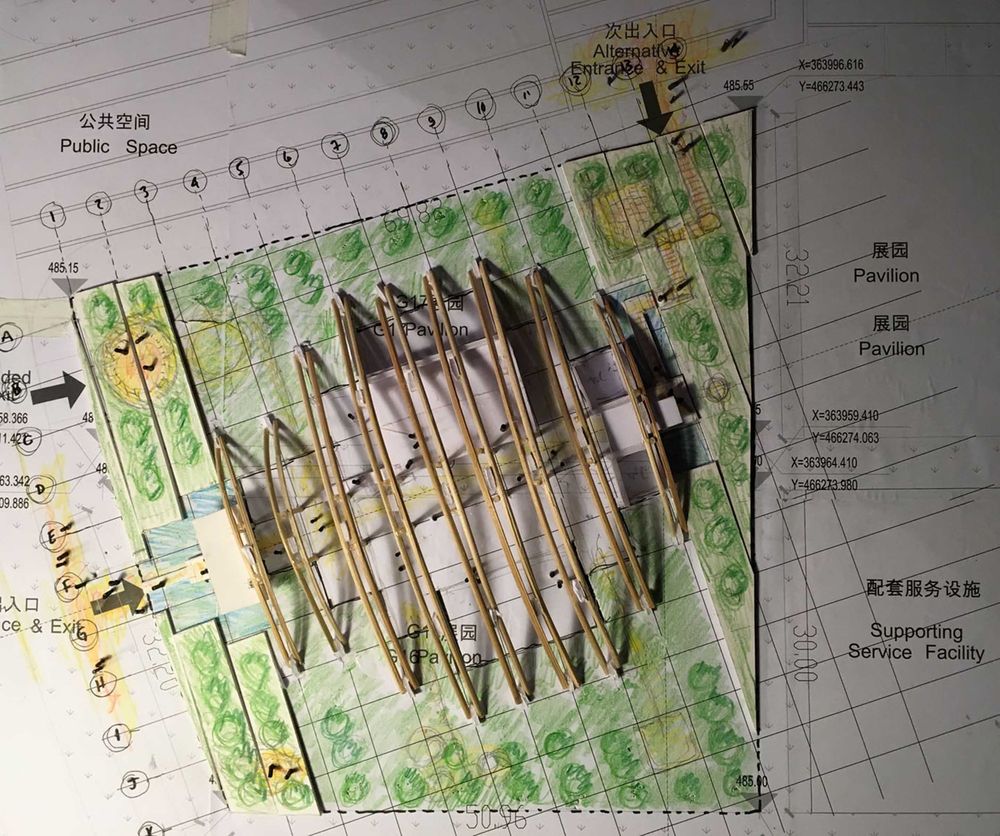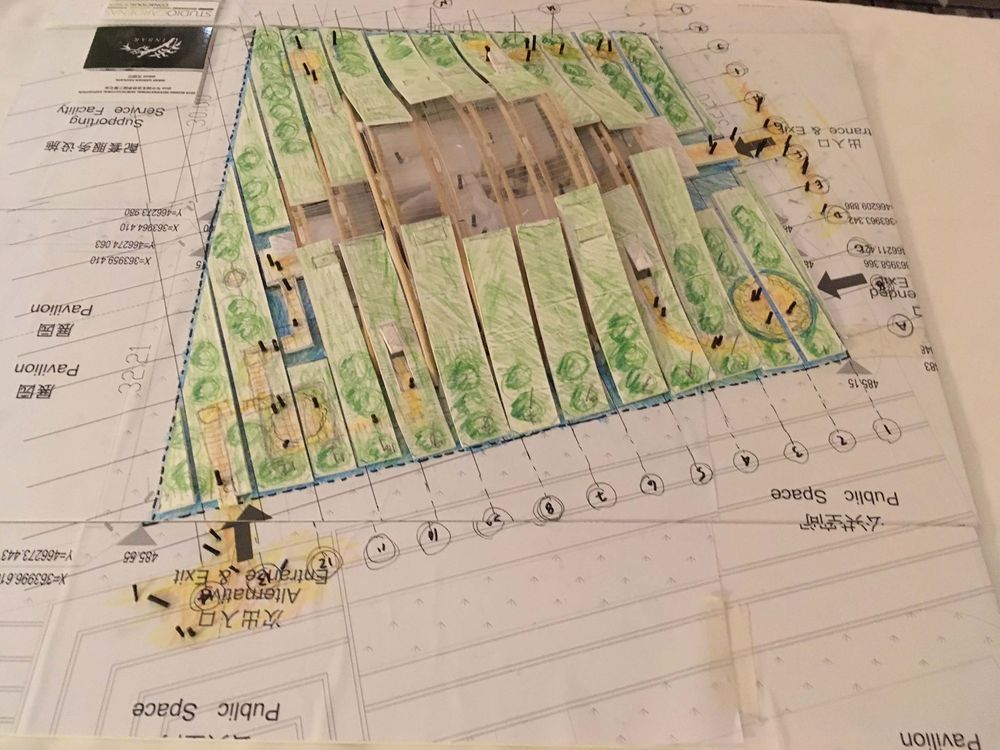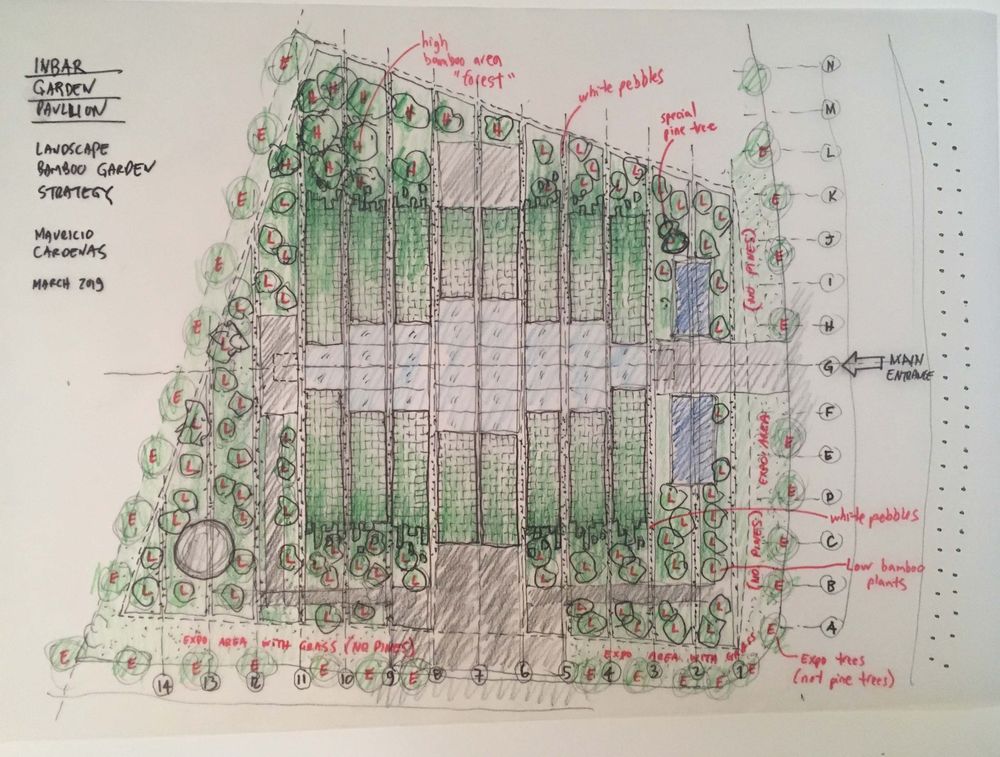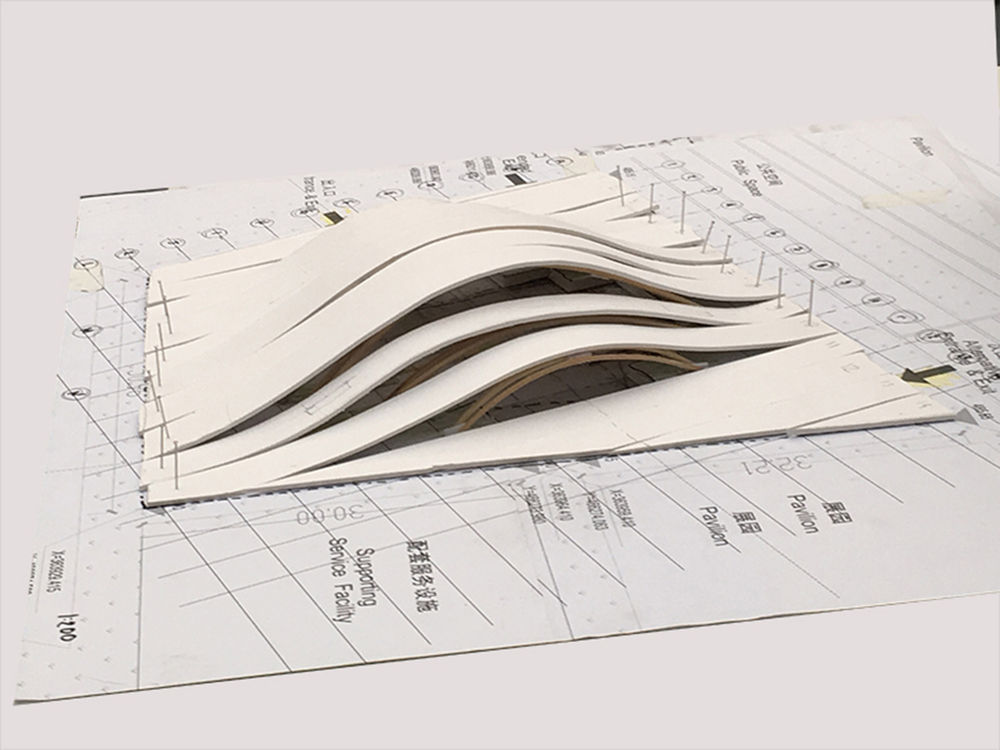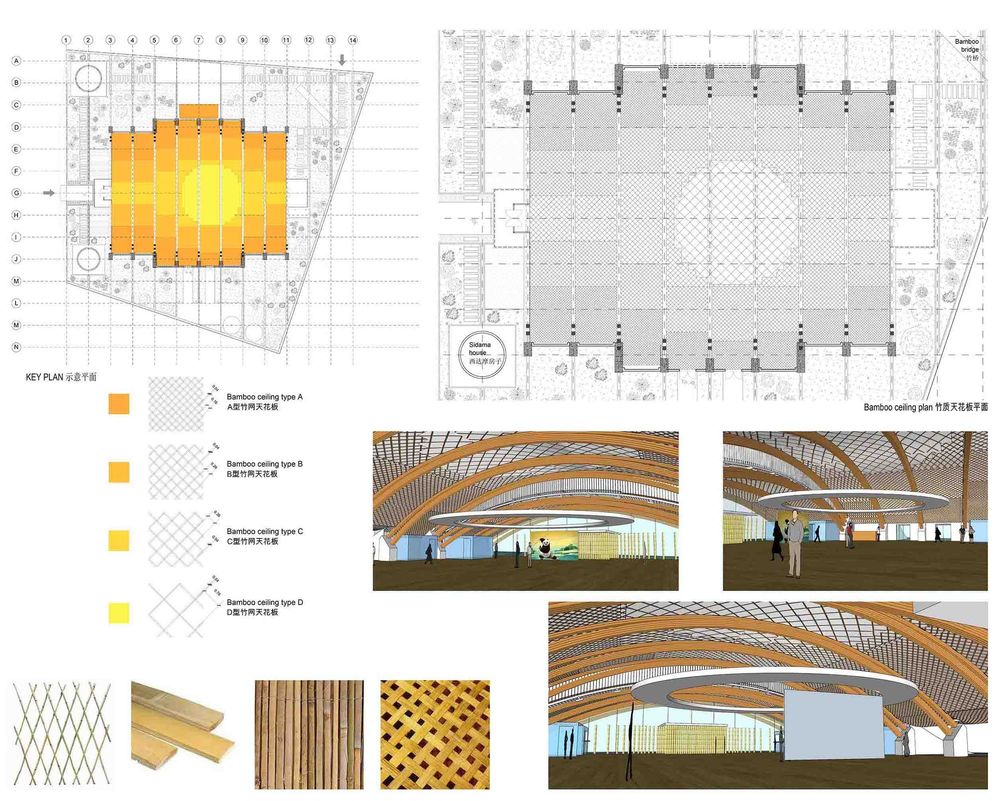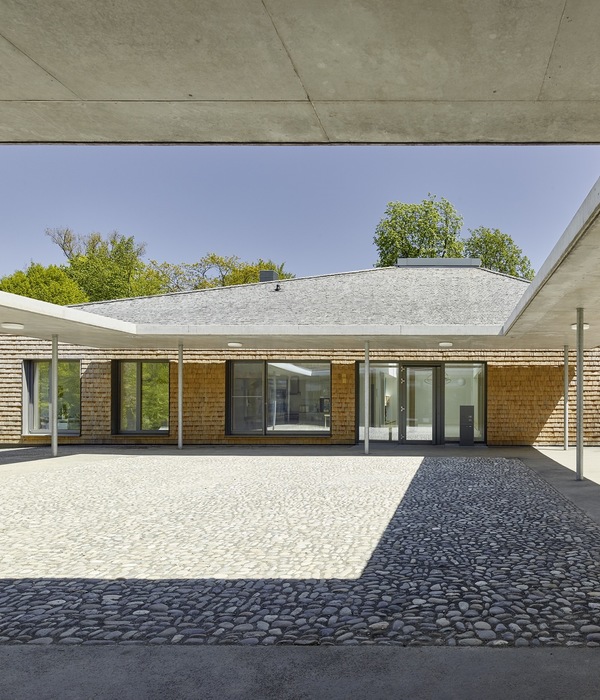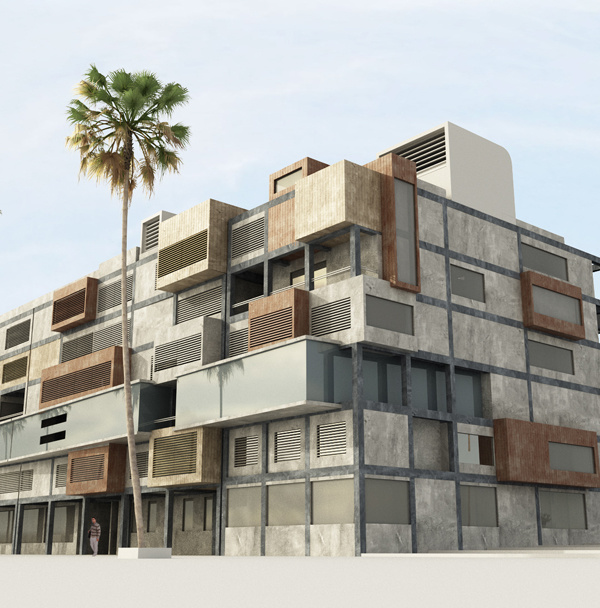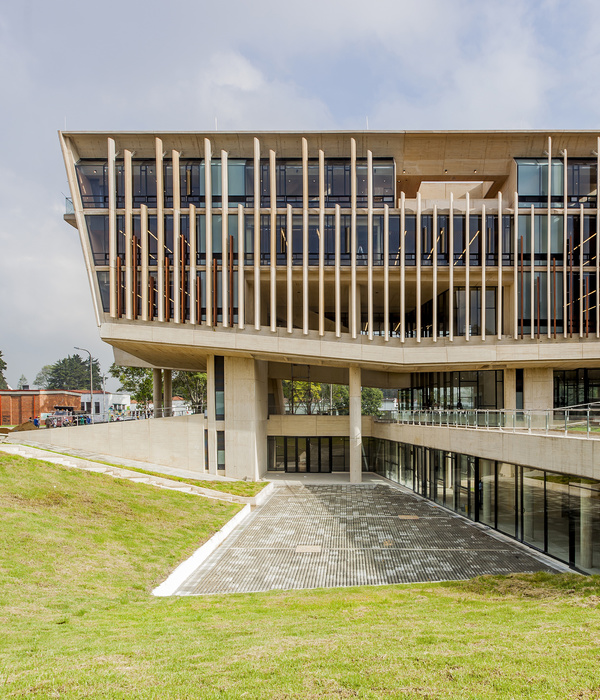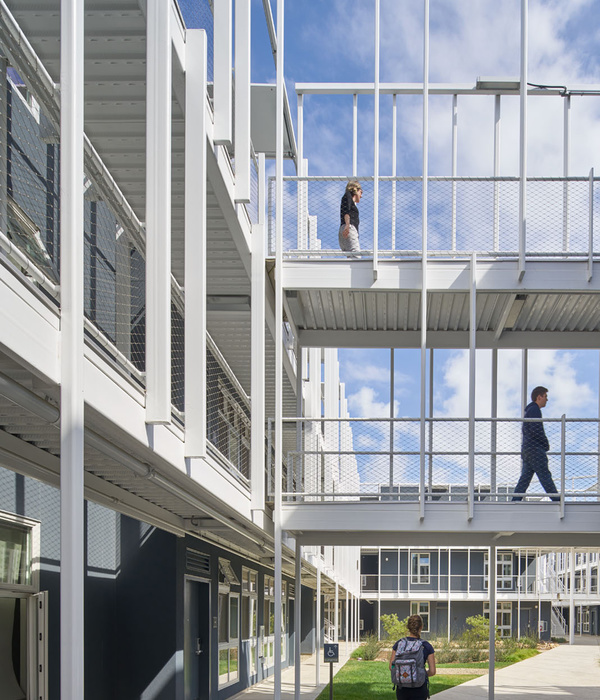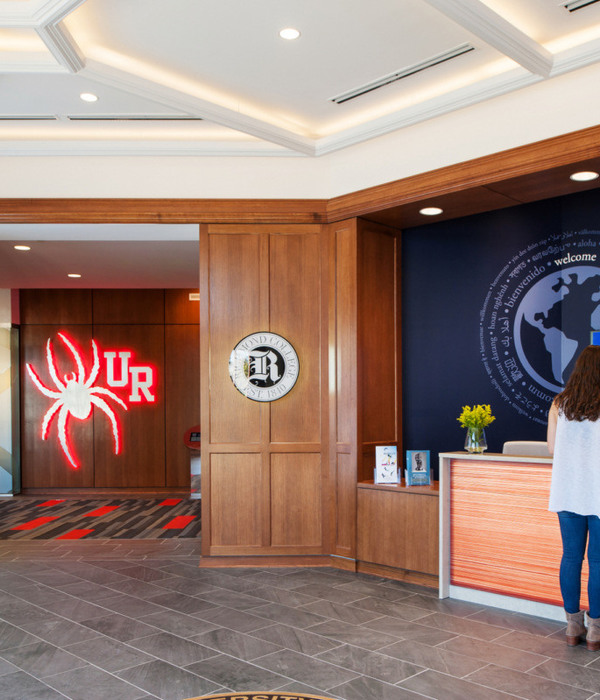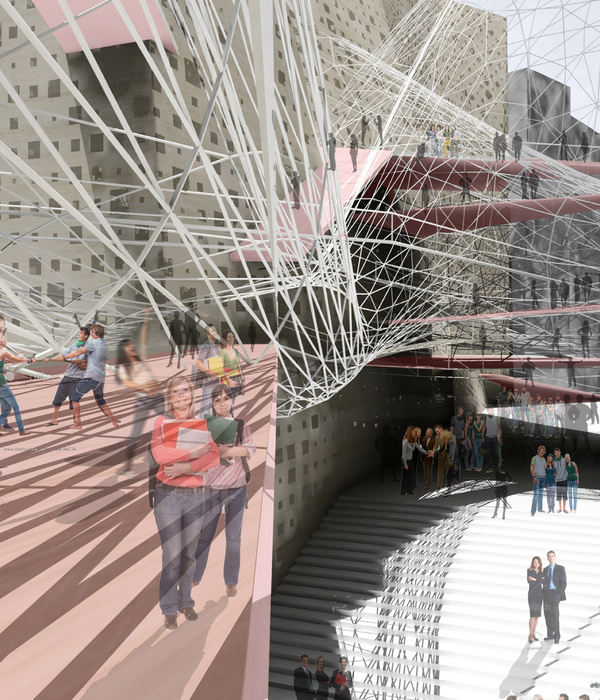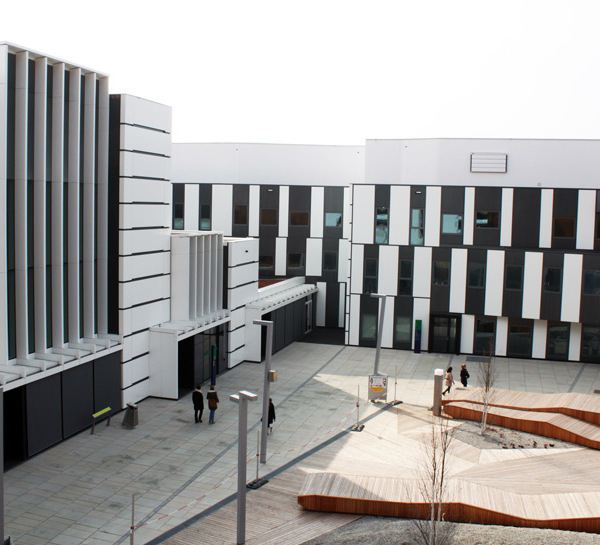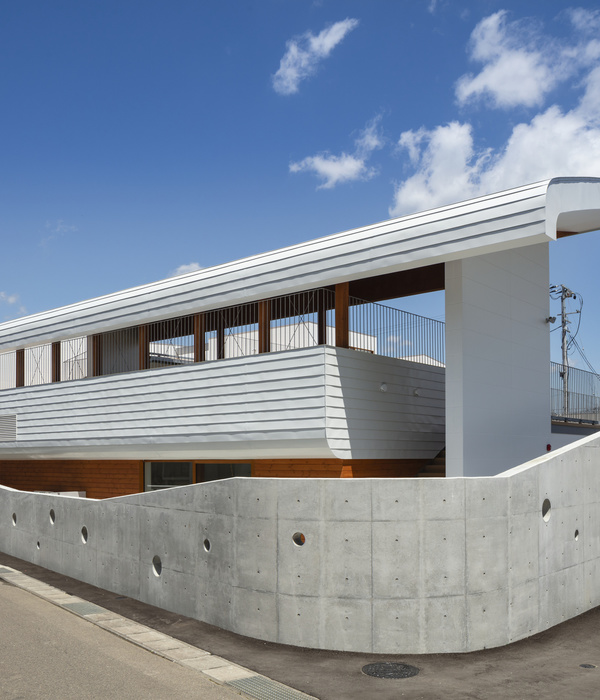北京世园会 INBAR 竹亭——自然与建筑的和谐融合
Bamboo and Rattan are amazing products of Nature ready to be used for Landscape, Architecture, Design, Interiors. Both materials are clear examples of sustainability, of ecology and in today’s environmental crisis are an important resource for architects, designers and for the construction industry. The Garden Pavilion for INBAR at the 2019 Beijing International Horticultural Exhibition is an amazing opportunity to explore, innovate and communicate the potential of these unique products of Nature.
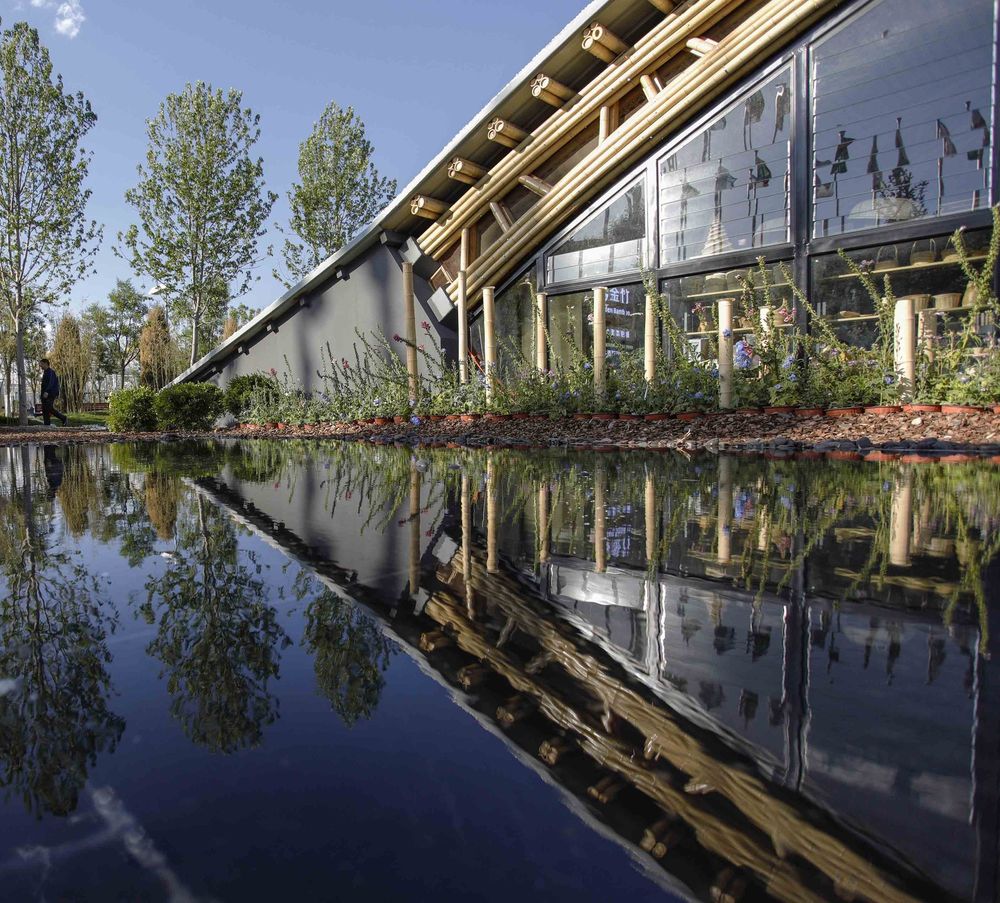
Concept / vision. Our starting idea is a contemporary interpretation of the traditional concept of “a Pavilion in the Garden” by fusing the Pavilion into the Garden, creating one single element: Garden-Pavilion, where architecture and landscape melt into each other. The structure which detaches the garden soil from the ground is made of natural bamboo poles a perfect product of Nature that best integrates the values of Ecology, Community, Nutrition, and Beauty.
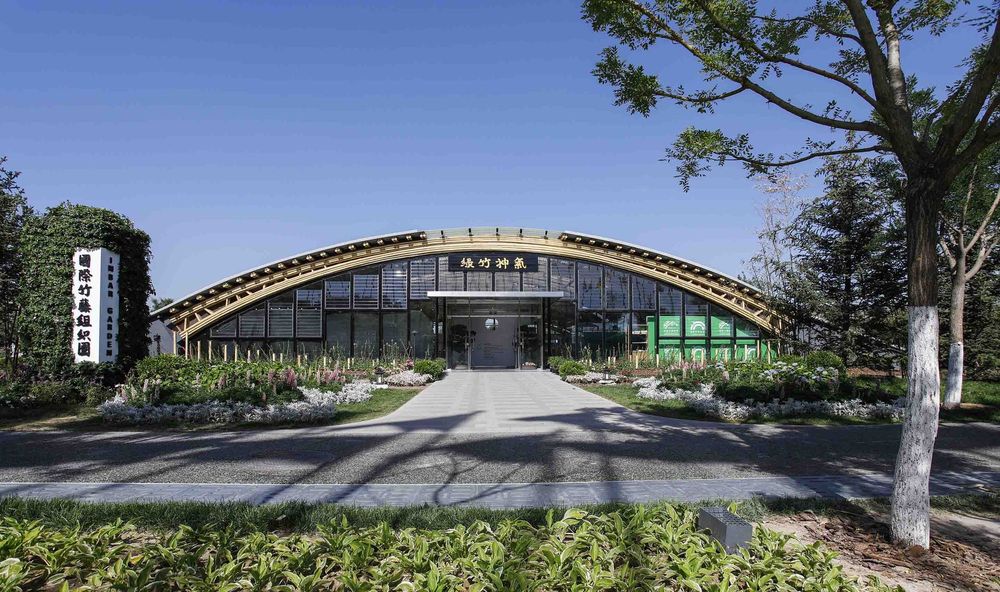
The project. The INBAR Garden Pavilion is located on the east side of the Expo 2019 International Pavilion and covers an area of 3100 square meters, including an open space of more than 1000 square meters and an outdoor green landscape area of 2,400 square meters. The Pavilion’s structure is with bamboo arches, and the landscape garden stretches up to blanket the roof of the structure, creating an organic, living structure named as the “Bamboo Eye” of the Expo 2019. The INBAR Pavilion is 54 meters in width and 40 meters in length. Each bamboo arch spans 32 meters and is 9 meters tall. The Pavilion’s truss arch structure makes the construction very light. The bamboo arches of the pavilion use more than 5,000 Phyllostachys pubescens bamboo culms, each 8cm to 10 cm in diameter and 4 to 6 years old. The main arches are bent and formed by fire baking. A certain process transforms the bamboo to golden yellow, and extends its service life to 30 years, greatly expanding the lifespan of the bamboo construction.
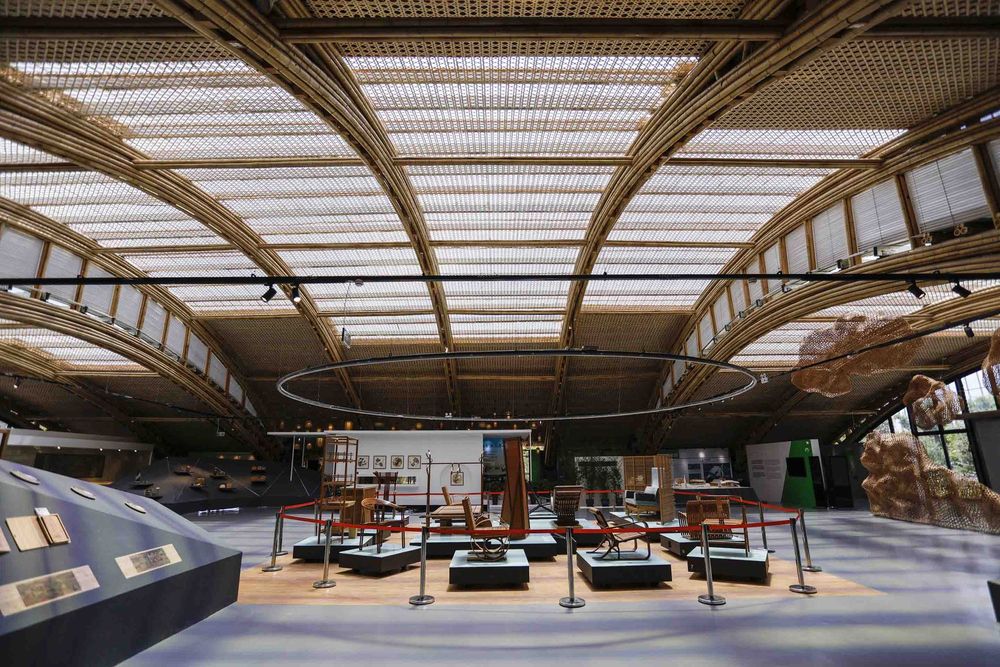
Sustainable design. Bamboo is the world's most carbon-absorbing plant, is said that bamboo can save the world, the use of this amazing natural renewable resource in a building is, therefore, an important decision for pursuing sustainable development, to strengthen the connection between man and environment. Inside INBAR Garden Pavilion people can directly feel the natural light inside the exhibition space, and the natural light shines through the bamboo weaving ceiling to the interior. The handmade ceiling is an attempt to apply traditional Chinese handicrafts to large-scale buildings, providing a familiar and welcoming environment for people.
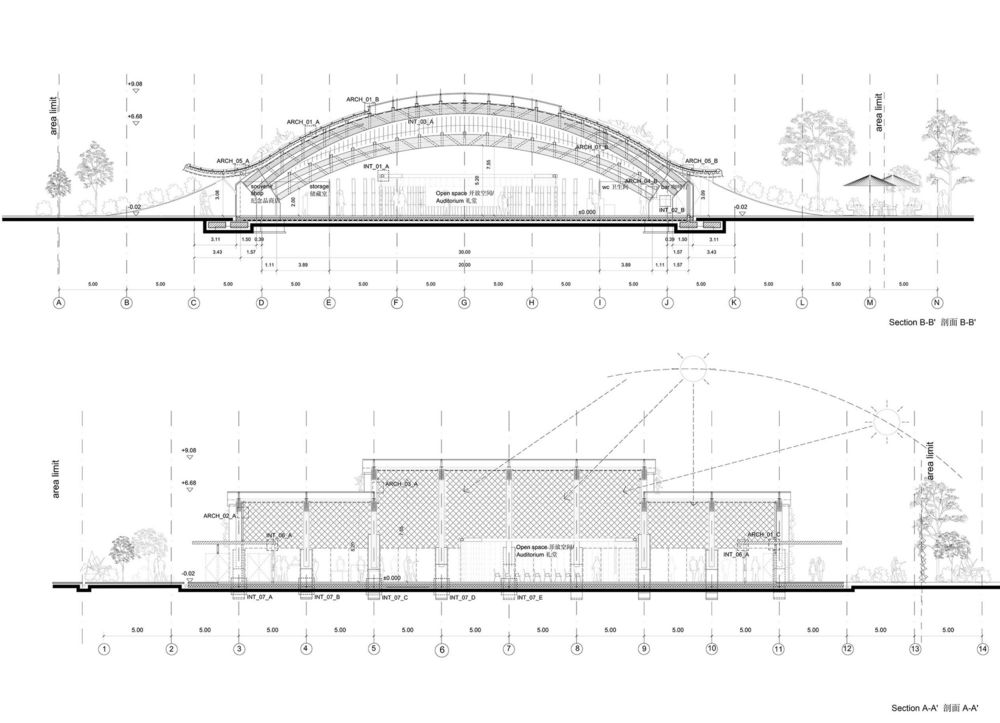
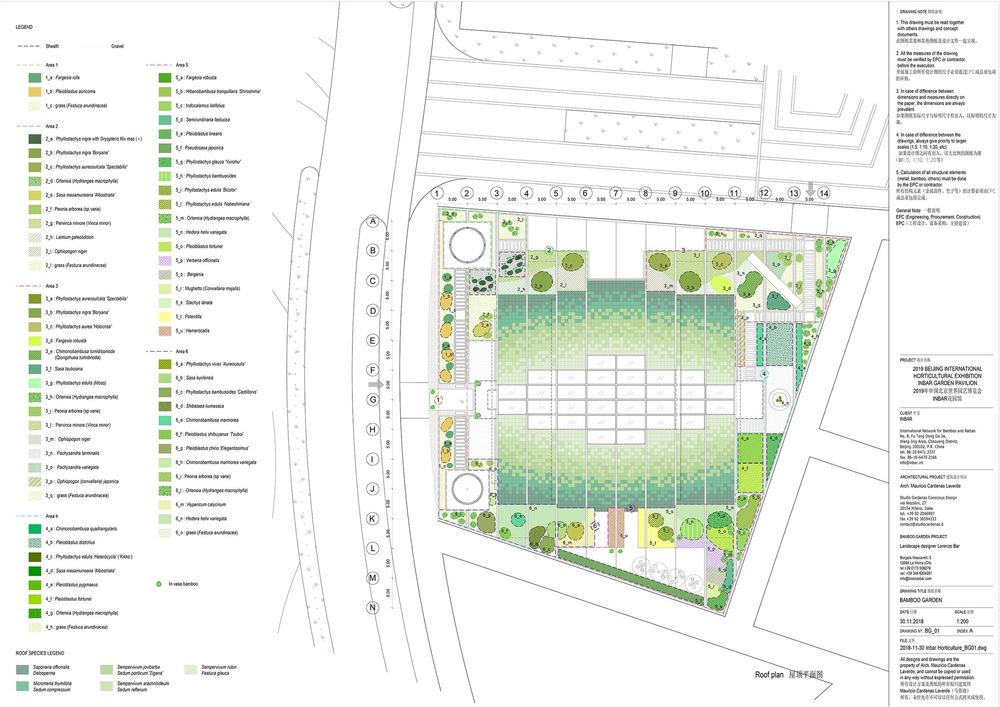
The INBAR Garden Pavilion design's sustainable strategy is not only the use of natural materials, but also to achieve comfort through passive design strategies such as the natural daylighting of the interiors, the acoustic control through the use of the soil on the roof and the natural cross ventilation through the openings and building orientation which allowed not to use air conditioning. In fact, this design is in cooperation with nature, and cooperation with nature is crucial to the future of architecture.

